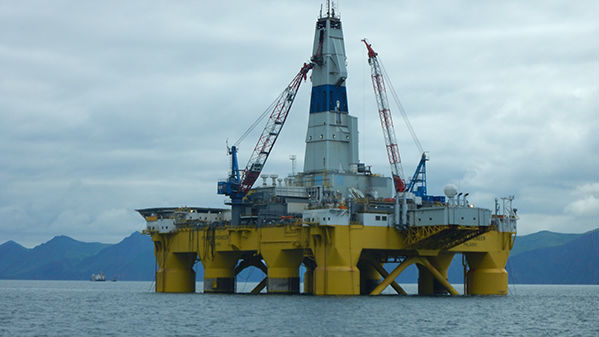Semi-Subs Pose Biofouling Risk in the Arctic

IMO's Marine Environment Protection Committee (MEPC) meet for its 69th session last week, and Friends of the Earth International submitted a paper calling for a particular focus on semi-submersible drilling platforms.
The paper was prepared by Dr Andrew N. Cohen of the Center for Research on Aquatic Bioinvasions in California.
Bioinvasions can result alter food webs and habitats with new species competing with or preying on native species. Commercial fisheries can be affected as can marine mammals, and Cohen makes the point that indigenous communities in the Arctic could suffer as a result.
Ecological theory and evidence suggest that the relatively low biological diversity of the Arctic’s marine waters should result in low biotic resistance, says Cohen, making the Arctic susceptible to bioinvasions.
Cohen cites studies that indicate ships travelling at speeds above 15 knots generally have less fouling on the main part of the hull and those travelling below 10 knots can have significant fouling.
Currently, IMO has voluntary guidelines for the management of biofouling and, says Cohen, the EPA’s requirements are so general that, like the Coast Guard regulations, they really only function as recommendations.
Cohen states that the best approach would be to apply an anti-fouling coating that prevents attachment of any organisms and remains effective for five years until it can be renewed at drydock. “Unfortunately, our closest candidate to this ideally-effective coating, TBT-based hull paint, turned out to be toxic to the environment and we banned it.”
This leaves the option of less effective coatings, a program of regular in-water hull cleaning or more frequent drydocking with hull cleaning and reapplication of coatings.
“Since the utilization of effective and safe anti-fouling coatings is a desirable element of all of these options, I recommend conducting a review of the efficacy, durability and safety of the available types of anti-fouling coatings, including their expected performance under cold water and ice abrasion conditions. Depending on the results of the review, it might be appropriate to recommend or require the use of certain types of hull coatings by ships entering Arctic waters.”
Cohen also recommends a review of in-water cleaning methodologies as it may be appropriate to prevent the release of live organisms or toxic materials or perhaps to ban the practice in Arctic waters.
“Whatever combination of options is pursued, it probably would be helpful to focus in part on the most heavily fouled and therefore high risk vessels. Among these, semi-submersible drilling platforms are notable in often hosting an impressive fouling community. I recommend considering the possibility of requiring semi-submersible drilling platforms to be thoroughly cleaned before entering the Arctic, and before shifting from one station to another across a large distance within the Arctic.”
